This is the former G&Ts Stock Clearance Shop. However, the building is better known to Winton’s older residents as the long-standing Co-op, the original of which (on this site) was a branch of the Parkstone and Heatherlands Society. Following a public meeting attended by 100 people, in May 1903, the society’s new store opened for business the following September. Molesworth House, as the store was then called, was replaced by a high, domed building, which became a familiar landmark. The dome was later removed and the building refaced.
A plaque documenting the history of The Carrick Stone.
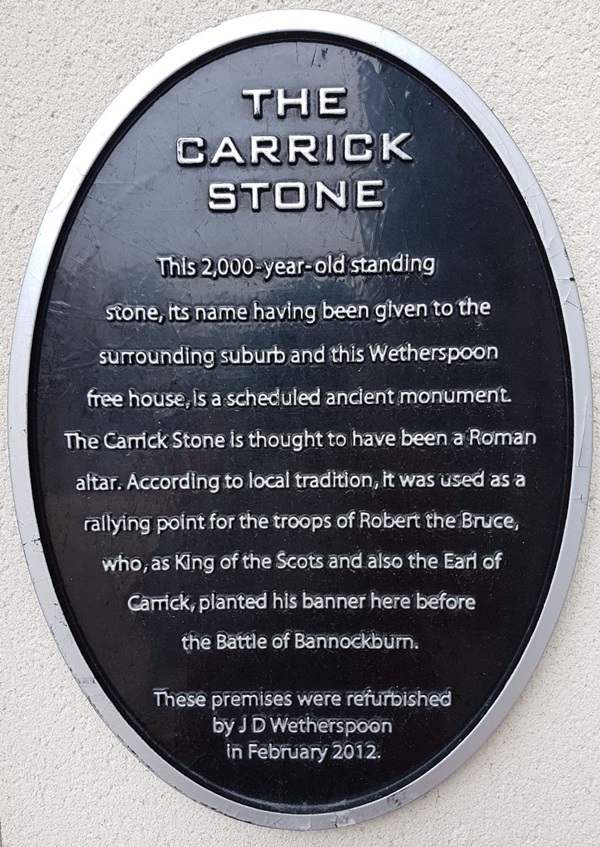
The text reads: This 2,000 year old standing stone, its name having been given to the surrounding suburb and this Wetherspoon free house, is a scheduled ancient monument. The Carrick Stone is thought to have been a Roman altar. According to local tradition, it was used as a rallying point for the troops of Robert the Bruce, who, as King of the Scots and also the Earl of Carrick, planted his banner here before the Battle of Bannockburn.
These premises were refurbished by J D Wetherspoon in February 2012.
An illustration and text about the Carrick Stone.
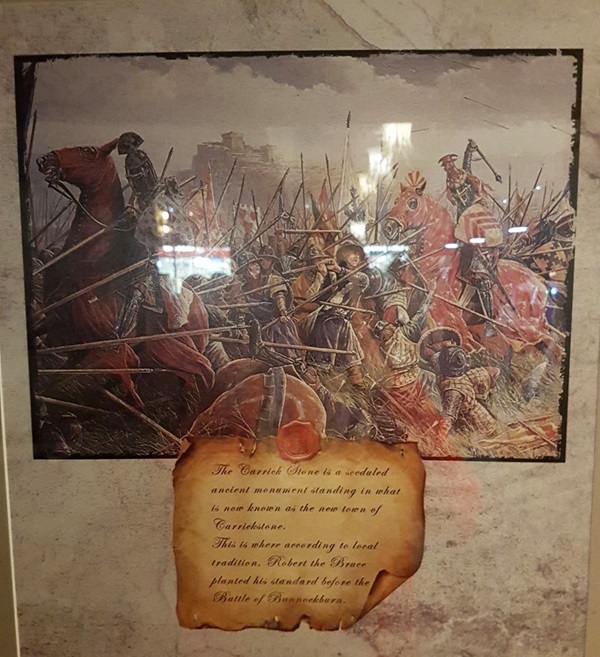
The text reads: The Carrick Stone is an ancient monument standing in what is known as the new town of Carrickstone. This is where according to local tradition, Robert the Bruce planted his standard before the Battle of Bannockburn.
Illustrations and text about the Antonine Wall.
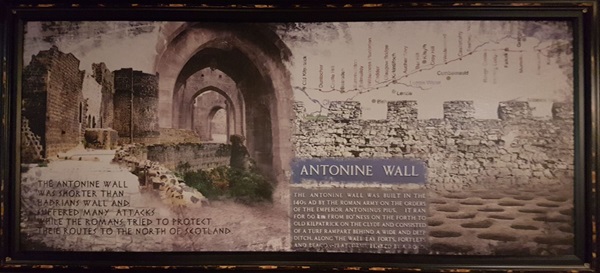
The text reads: The Antonine Wall was shorter than Hadrian’s Wall and suffered many attacks while the Romans tried to protect the routes to the north of Scotland.
The Antonine Wall was built in the 140s AD by the Roman army on the orders of the Emperor Antoninus Pius. It ran for 60km from Bo’ness on the Forth to old Kilpatrick on the Clyde and consisted of a turf rampart behind a wide and deep ditch. Along the wall lay forts, fortlets and beacon platforms linked by a road.
A photograph and text about the sculpture Arria.
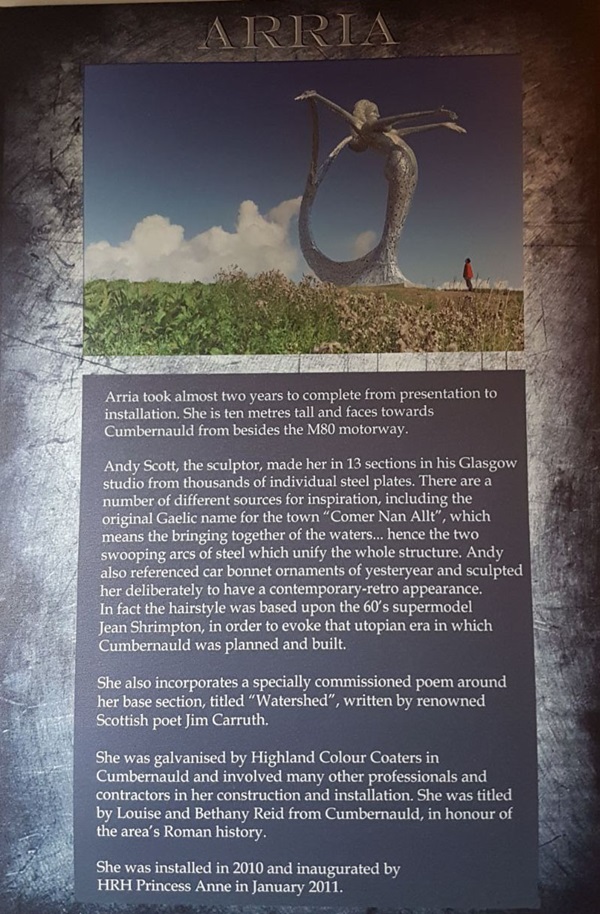
The text reads: Arria took almost two years to complete from presentation to installation. She is ten metres tall and faces towards Cumbernauld from besides the M80 motorway.
Andy Scott, the sculptor, made her in 13 sections in his Glasgow studio from thousands of individual steel plates. There are a number of different sources for inspiration, including the original Gaelic name for the town ‘Comer Nan Allt’, which means the bringing together of the waters… hence the two swooping arcs of the steel which unify the whole structure. Andy also referenced car bonnet ornaments of yesteryear and sculpted her deliberately to have a contemporary retro appearance. In fact the hairstyle was based upon the 60s supermodel Jean Shrimpton, in order to evoke that utopian era in which Cumbernauld was planned and built.
She also incorporates a specially commissioned poem around her base, titled Watershed, written by renowned Scottish poet Jim Carruth.
She was galvanised by Highland Colour Coaters in Cumbernauld and involved many other professionals and contractors in her construction and installation. She was titled by Louise and Bethany Reid from Cumbernauld, in honour of the area’s Roman history.
She was installed in 2010 and inaugurated by HRH Princess Anne in January 2011.
A poem entitled Watershed, by Jim Carruth.
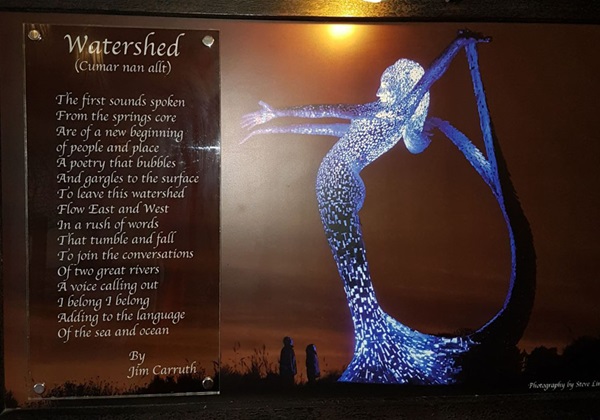
The text reads: Watershed
(Cumar nan allt)
The first sounds spoken
From the springs core
Are of a new beginning
Of people and place
A poetry that bubbles
And gargles to the surface
To leave this watershed
Flow east and west
In a rush of words
That tumble and fall
To join the conversations
Of two great rivers
A voice calling out
I belong I belong
Adding to the language
Of the sea and ocean
A collective of old photographs of Cumbernauld.
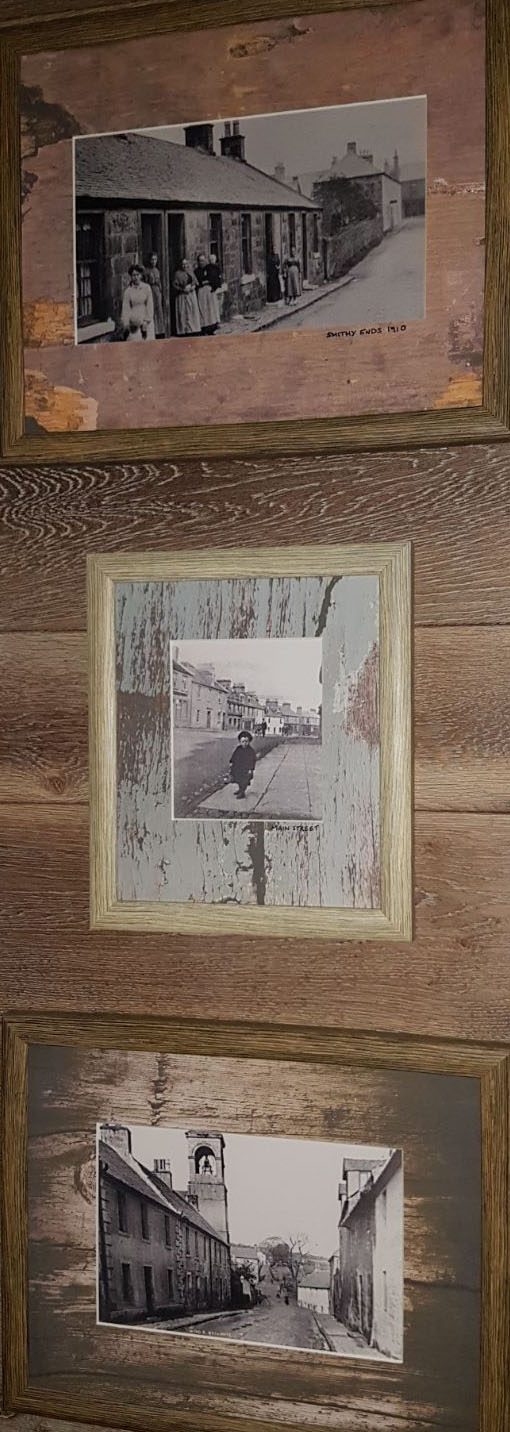
Throughout the pub, there are various sculptures and illustrations of bulls.
A bull's head is a feature of the District Council's coat of arms.
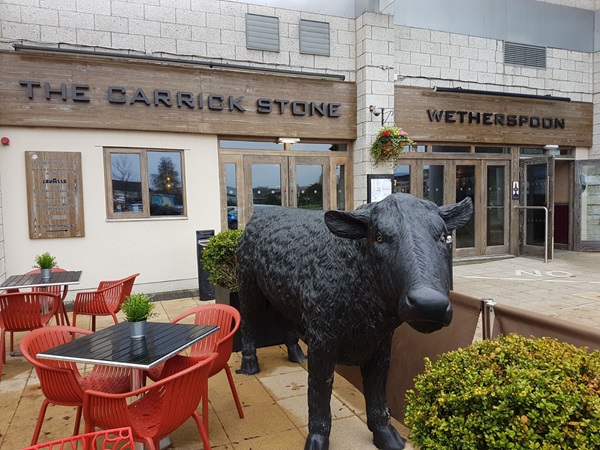
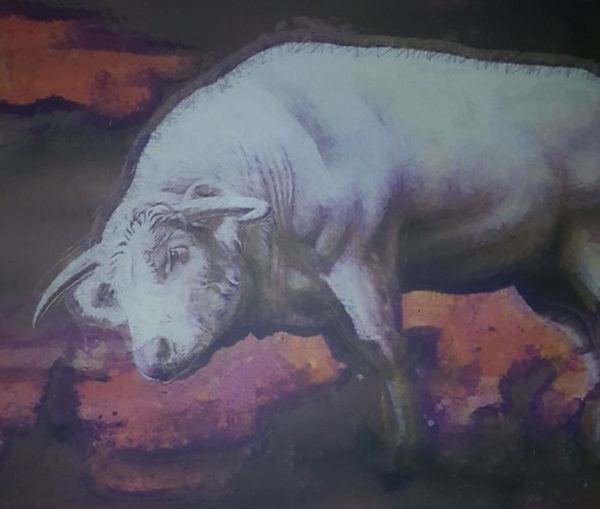
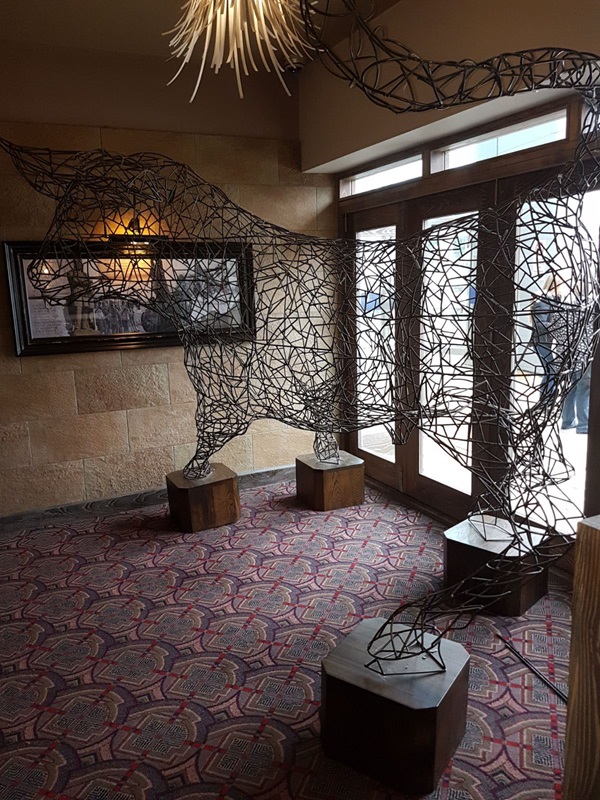
External photograph of the building – main entrance.
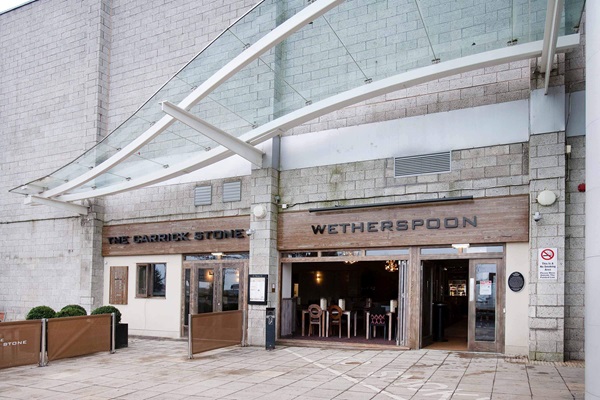
If you have information on the history of this pub, then we’d like you to share it with us. Please e-mail all information to: pubhistories@jdwetherspoon.co.uk